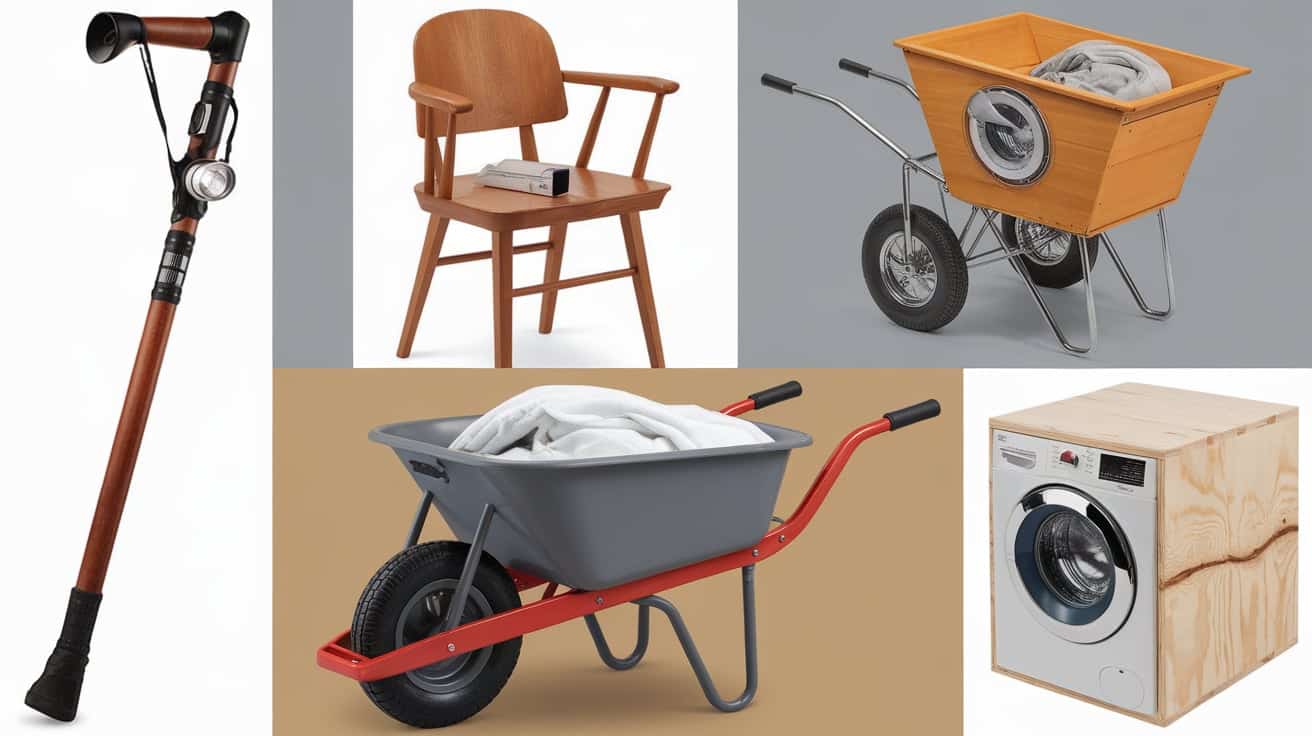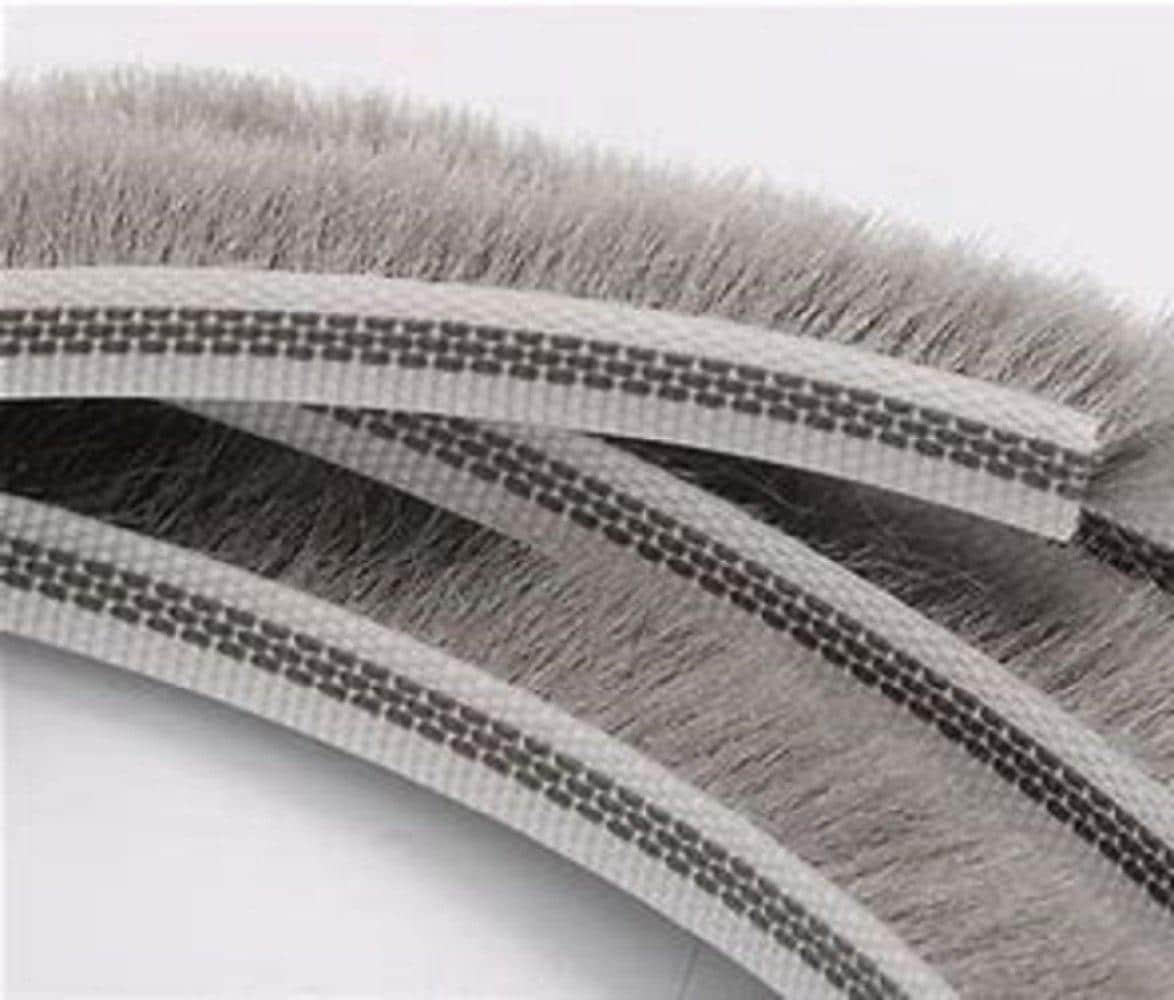45 Wacky and Weird Inventions That Begin with W
We’ve all heard of famous inventions like the light bulb, the telephone, and the internet. But did you know some truly bizarre and wacky inventions exist?
From practical to downright strange, the world is full of odd creations that start with the letter W.
This article will explore 45 of the weirdest W-themed inventions ever made.
Get ready to be amazed, amused, and occasionally baffled by this collection of the most unusual patents ever created.
Prepare to be surprised!
Wacky and Weird Inventions That Begin with W
1. Wagon Brake
A wagon brake is a mechanical device used to slow down or stop the motion of a wagon or carriage.
It typically consists of a lever-operated friction pad that presses against the wheel, creating resistance and slowing the wagon’s movement.
Wagon brakes were invented in the early 19th century as a crucial safety innovation for the rapidly evolving transportation systems of the time.
Wagon brakes improved transportation safety, allowing drivers to control their vehicles better and prevent accidents.
| Detail | Information |
|---|---|
| Invention Year | Early 19th century |
| Price Range | $50 – $200 |
2. Wall Protector
A wall protector is designed to shield walls from damage caused by furniture, doors, and other objects.
It helps prevent scuffs, scratches, and dents, preserving the appearance and structural integrity of walls.
Wall protectors are typically made of durable materials like rubber, plastic, or metal.
They come in various shapes and sizes to accommodate different wall surfaces and furniture configurations, allowing for customizable protection.
| Detail | Information |
|---|---|
| Invention Year | Early 20th century |
| Price Range | $5 – $50 |
3. Wardrobe
Some wardrobes and closets feature innovative design elements, such as hidden compartments, adjustable shelving, or integrated lighting, to maximize storage space and organization.
Wardrobes and closets come in various styles, from freestanding units to built-in designs seamlessly integrated into the room’s architecture.
They can also vary in size, from compact designs for small spaces to walk-in closets for larger homes.
Different types of wardrobes and closets are better suited to various sizes and layouts of spaces.
| Detail | Information |
|---|---|
| Invention Year | Ancient times |
| Price Range | $100 – $2000 |
4. Warm Air Furnace
Benjamin Franklin invented a warm-air furnace in the late 18th century and a cast-iron stove that used flues to spread heated air throughout a building.
Warm furnaces heat air using gas, oil, or electricity and then circulate the warm air through ducts and vents to warm a building.
Over time, these furnaces have become more energy-efficient and include features like programmable thermostats and zoned heating for better temperature control.
| Detail | Information |
|---|---|
| Invention Year | Late 18th century |
| Price Range | $1000 – $5000 |
5. Wash Board
Washboards were essential for manual laundry. Their corrugated surface helped scrub and remove dirt from clothes.
Traditional washboards were made of wood with a metal surface for effective cleaning, though some used glass or other materials.
Modern washing machines have mostly replaced washboards but are still used for nostalgia or decorative purposes, especially in music and vintage home decor.
| Detail | Information |
|---|---|
| Invention Year | 19th century |
| Price Range | $10 – $50 |
6. Wash Boiler
A wash boiler is a large container that heats water for laundry before electric or gas-powered washing machines. It helps maintain hot water for hand-washing clothes.
Over time, wash boilers became more efficient with better insulation and heating.
Modern washing machines and water heaters have mostly replaced wash boilers, but some traditional laundry services still use them for specialized tasks or to keep a historic look.
| Detail | Information |
|---|---|
| Invention Year | 19th century |
| Price Range | $50 – $300 |
7. Wash Stand Screen
Washstand screens were decorative partitions or dividers placed around wash basins or stands.
They provided privacy and shielded the surrounding area from water splashes during washing.
These screens served a functional purpose, allowing users to maintain privacy and keep their surroundings clean while doing personal grooming or washing tasks.
| Detail | Information |
|---|---|
| Invention Year | 19th century |
| Price Range | $20 – $100 |
8. Washing and Scouring Machine
The development of washing and scouring machines was driven by the desire to automate and streamline manual laundry.
Washing and scouring machines typically clean clothes and other fabrics using water, agitation, and detergents.
The invention of washing and scouring machines had a profound impact on daily life, significantly reducing the amount of manual labor required for laundry tasks and improving efficiency, especially in households and commercial settings.
| Detail | Information |
|---|---|
| Invention Year | 19th century |
| Price Range | $200 – $2000 |
9. Waste Way Stopper
The wasteway stopper is an ingenious device designed to prevent clogging and blockages in plumbing systems.
It features a specialized mechanism that effectively traps and holds back solid waste, allowing water to flow freely while preventing unwanted materials from entering the drainage system.
Wasteway stoppers are typically installed in sinks, bathtubs, and other plumbing fixtures where debris and waste can accumulate.
| Detail | Information |
|---|---|
| Invention Year | Early 20th century |
| Price Range | $5 – $20 |
10. Water Boiler for Cooking Stoves
The water boiler for cooking stoves was a specialized attachment designed to integrate with traditional stoves and provide a convenient source of hot water.
It allowed users to heat water alongside the cooking process, eliminating the need for separate heating methods.
Over time, the design of water boilers for cooking stoves evolved, incorporating features such as improved insulation, better heat transfer mechanisms, and integration with more advanced stove technologies.
| Detail | Information |
|---|---|
| Invention Year | 19th century |
| Price Range | $50 – $300 |
11. Water Closet
The water closet, or modern flush toilet, is often attributed to the English inventor Sir John Harington, who patented a design for a flushing toilet in the late 16th century.
However, using water to remove waste has been explored in various forms throughout history.
Over the centuries, the water closet design underwent numerous improvements, including developing more efficient flushing mechanisms, using ceramic materials for the bowl, and integrating water supply and drainage systems.
| Detail | Information |
|---|---|
| Invention Year | Late 16th century |
| Price Range | $100 – $1000 |
12. Water Cooler
The water cooler, also known as a drinking fountain or bubbler, is designed to provide a convenient and accessible source of chilled, filtered drinking water.
Water coolers have evolved from simple, freestanding units to more advanced designs that incorporate features like built-in filters, refrigeration systems, and even bottle-filling capabilities.
| Detail | Information |
|---|---|
| Invention Year | 20th century |
| Price Range | $100 – $500 |
13. Water Gage
The water gage, or water level indicator, is critical in various industrial and residential applications, such as steam boilers, water tanks, and other liquid storage systems.
It visually represents the water level, allowing users to monitor and maintain the appropriate liquid levels.
Over time, water gage designs have become more sophisticated, incorporating features like digital displays, remote monitoring capabilities, and automated alerts to enhance their accuracy and usability.
| Detail | Information |
|---|---|
| Invention Year | 19th century |
| Price Range | $50 – $200 |
14. Wrought Iron Girder
Wrought iron girders were an essential structural element in constructing buildings, bridges, and other large-scale projects.
These strong, durable metal beams provided the necessary support to withstand heavy loads and stresses, contributing to the stability and integrity of the overall structure.
| Detail | Information |
|---|---|
| Invention Year | 19th century |
| Price Range | $1000 – $5000 |
15. Watch Case

Watch cases protect and enhance a watch’s appearance and functionality.
They often include features like water resistance, shockproofing, and anti-reflective coatings to safeguard the internal components.
Watch cases come in various styles and materials, each offering unique advantages.
Solid cases, often made of stainless steel, gold, or titanium, provide maximum protection, while display cases with transparent backs allow a glimpse into the intricate inner workings.
| Detail | Information |
|---|---|
| Invention Year | 16th century |
| Price Range | $50 – $500 |
16. Watch Maker’s Lathe
The watchmaker’s lathe is an essential tool in the precision crafting of watches.
This specialized machine allows watchmakers to meticulously shape, turn, and polish the various components of a timepiece, ensuring the perfect fit and finish critical to the watch’s accuracy and durability.
Various specialized tools and attachments, such as collets, chucks, and tailstocks, often accompany Watchmaker’s lathes.
These accessories enable the watchmaker to perform intricate tasks like drilling, threading, and engraving the minute parts of a watch’s internal mechanisms.
| Detail | Information |
|---|---|
| Invention Year | 19th century |
| Price Range | $500 – $5000 |
17. Wringer Roll
Wringer rolls, also known as clothes wringers, were essential components of early laundry equipment, used to remove excess water from freshly washed clothes.
These rollers, typically made of rubber or other materials, would gently squeeze the water out of the fabric, helping to speed up the drying process and make the clothes easier to handle and iron.
| Detail | Information |
|---|---|
| Invention Year | 19th century |
| Price Range | $20 – $100 |
18. Writing Pen
The writing pen has a long and fascinating history, evolving from the earliest quills and reed pens to the modern ballpoint, fountain, and rollerball designs.
Each iteration of the writing instrument has improved ink flow, writing quality, and overall user experience, transforming the way people express themselves through the written word.
| Detail | Information |
|---|---|
| Invention Year | Ancient times |
| Price Range | $1 – $100 |
19. Wood Turning Lathe
The wood-turning lathe was a versatile tool that allowed skilled woodworkers to create a wide range of artistic and functional wooden objects, from bowls and vases to furniture components and decorative pieces.
By manipulating the wood as it spins on the lathe, artisans could shape and sculpt the material into intricate, often symmetrical designs, showcasing their technical expertise and creative vision.
| Detail | Information |
|---|---|
| Invention Year | 14th century |
| Price Range | $500 – $5000 |
20. Wood Polishing Machine
Wood polishing machines achieve high-quality, smooth, and lustrous finishes on wooden objects and surfaces.
These specialized machines, often utilizing abrasive materials and polishing compounds, refined the texture and sheen of wood, enhancing its aesthetic appeal and protecting it from wear and tear.
| Detail | Information |
|---|---|
| Invention Year | 20th century |
| Price Range | $100 – $1000 |
21. Wood Pavement
Wood pavement, also known as wooden blocks or wood-block paving, was an alternative to traditional concrete or asphalt for road surfaces and walkways.
While not as durable as modern paving materials, wood pavement offered advantages such as improved traction, noise reduction, and reduced environmental impact in certain applications.
| Detail | Information |
|---|---|
| Invention Year | 19th century |
| Price Range | $10 – $50 per square foot |
22. Water Meter

Water meters are essential for measuring and managing water consumption in various industries, including agriculture, manufacturing, and municipal water systems.
These devices accurately track water usage, enabling better resource planning, conservation efforts, and the identification of potential leaks or inefficiencies.
Advancements in water meter technology have led to significant improvements in measurement accuracy.
Modern water meters incorporate digital displays, automated data logging, and remote monitoring capabilities. They provide more precise and reliable water usage data to help organizations make informed decisions about their water management strategies.
| Detail | Information |
|---|---|
| Invention Year | 19th century |
| Price Range | $50 – $300 |
23. Water Prism
Water prisms are valuable scientific research and experimentation tools, particularly in optics and physics.
By exploiting water’s refractive properties, these prisms can disperse light into its constituent wavelengths, allowing for the study of color, spectrum analysis, and the behavior of light in various media.
| Detail | Information |
|---|---|
| Invention Year | 19th century |
| Price Range | $10 – $100 |
24. Water Raising Apparatus
Water-raising apparatuses, such as water wheels and pumps, played a crucial role in the development of irrigation systems for agricultural purposes.
These devices, often powered by water or other renewable energy sources, enabled farmers to efficiently extract and distribute water to their crops, thereby improving crop yields and expanding the reach of arable land.
| Detail | Information |
|---|---|
| Invention Year | Ancient times |
| Price Range | $200 – $2000 |
25. Water Reservoir for Cooking Stoves
Water reservoirs integrated into cooking stoves provided a convenient way to store and access hot water for various household tasks, such as washing dishes, preparing beverages, and supplementing the heating system.
These reservoirs were designed to maintain the temperature of the stored water, ensuring a ready supply of hot water without the need for continuous heating.
| Detail | Information |
|---|---|
| Invention Year | 19th century |
| Price Range | $50 – $300 |
26. Water Tuyere
Water tuyeres, devices that use water to control the flow of air or other gases, found significant applications in industrial processes, particularly in metalworking.
These tuyeres were used to regulate the temperature and airflow in furnaces, smelters, and other high-temperature environments, contributing to the efficiency and safety of various industrial operations.
| Detail | Information |
|---|---|
| Invention Year | 19th century |
| Price Range | $100 – $500 |
27. Water Wheel
Water wheels have a long history as a renewable energy source, harnessing the power of flowing water to generate mechanical energy.
These devices played a crucial role in the industrialization of many regions, powering a wide range of machinery and equipment before the widespread adoption of electrical power generation.
The principles of water wheel technology continue to be explored and applied in modern hydropower systems, contributing to the development of sustainable energy solutions.
| Detail | Information |
|---|---|
| Invention Year | Ancient times |
| Price Range | $500 – $5000 |
28. Watering Columns for Railroad Water Tanks
Watering columns, also known as water columns or water cranes, were essential infrastructure for steam-powered railroads.
These specialized columns were used to refill the water tanks of steam locomotives, enabling them to travel longer distances without the need for frequent stops.
The widespread installation of watering columns along railroad tracks was a key factor in the expansion and efficiency of early rail transportation networks.
| Detail | Information |
|---|---|
| Invention Year | 19th century |
| Price Range | $1000 – $5000 |
29. Weather Strip
Weather strips are simple yet effective devices designed to improve buildings’ insulation and energy efficiency.
Sealing gaps and cracks around doors, windows, and other openings, as well as weather strips, helps prevent the unwanted transfer of heat and air, reduces energy consumption, and improves overall comfort and climate control within a structure.
| Detail | Information |
|---|---|
| Invention Year | 20th century |
| Price Range | $5 – $50 |
30. Weighing Apparatus
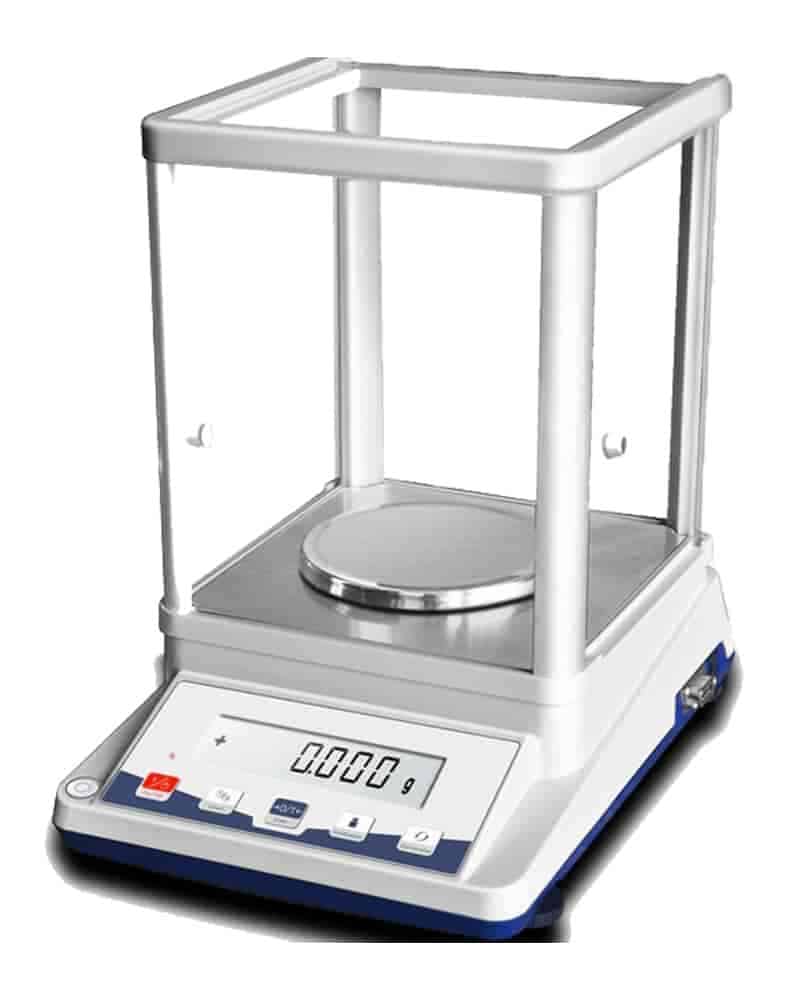
Accurate weighing is crucial in various industries, from scientific research to commercial transactions.
Weighing apparatuses, such as scales and balances, are engineered to provide precise measurements, ensuring fairness, regulatory compliance, and the integrity of various processes that rely on the reliable quantification of weight and mass.
| Detail | Information |
|---|---|
| Invention Year | Ancient times |
| Price Range | $20 – $2000 |
31. Well Bucket
Well buckets were an essential tool for drawing water from deep wells before the advent of modern pumping systems.
These simple yet ingenious devices allowed users to lower a container into the well, collect water, and then raise it back to the surface, providing a reliable means of accessing groundwater resources for domestic, agricultural, and industrial purposes.
| Detail | Information |
|---|---|
| Invention Year | Ancient times |
| Price Range | $10 – $50 |
32. Wheel and Axle
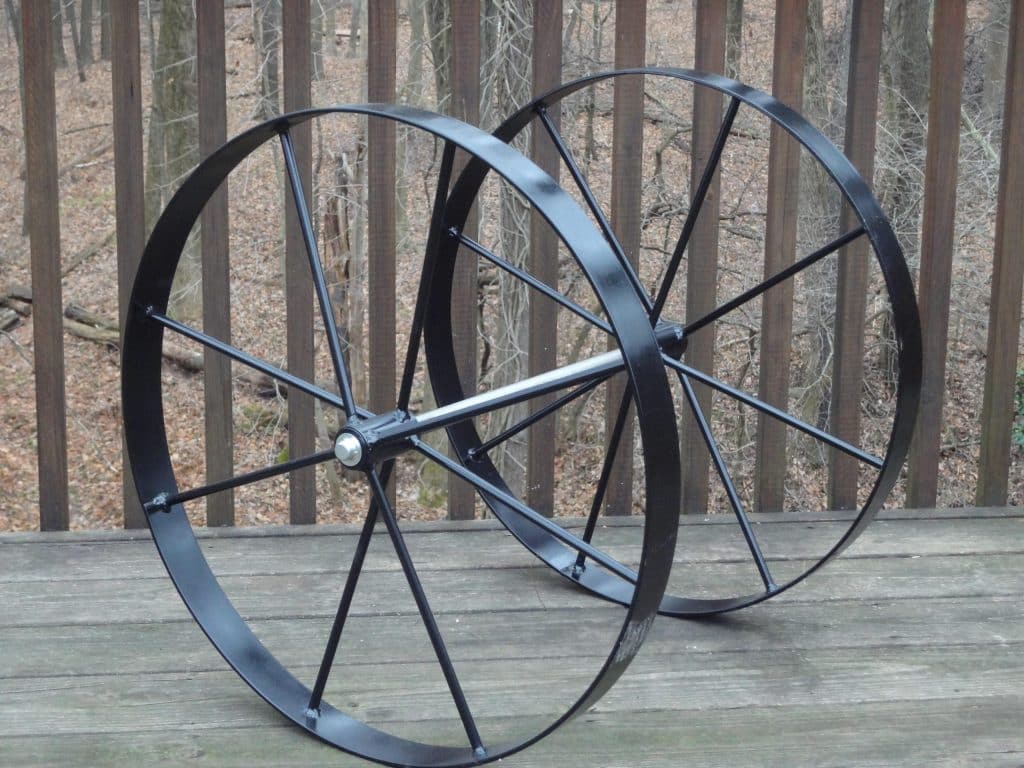
The wheel and axle are among transportation’s most fundamental and revolutionary inventions.
By enabling the development of carts, chariots, and other wheeled vehicles, this simple mechanism dramatically improved human and cargo movement efficiency and speed, transforming how people and goods were transported across vast distances.
| Detail | Information |
|---|---|
| Invention Year | Ancient times |
| Price Range | $100 – $500 |
33. Wood Parlor Stove
Wood parlor stoves were designed to provide efficient and localized heating within the home, particularly in smaller living spaces or individual rooms.
These stoves, fueled by wood, utilized advanced airflow and combustion mechanisms to generate warmth, making them a popular heating option in the days before central heating systems became widely available.
| Detail | Information |
|---|---|
| Invention Year | 19th century |
| Price Range | $100 – $1000 |
34. Whip Rack
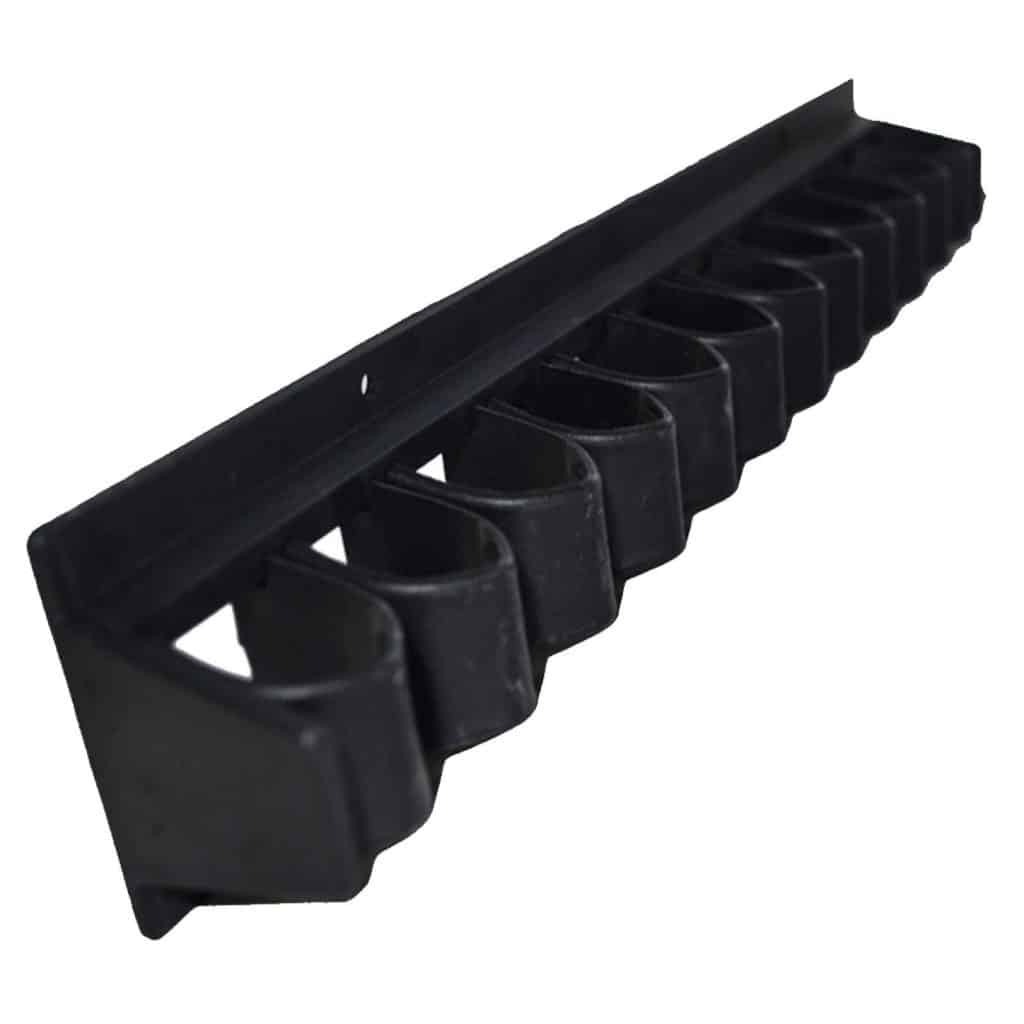
Whip racks were specialized devices designed to organize and store whips, often used in agricultural or industrial settings.
These racks provided a convenient and accessible way to keep whips neatly arranged and readily available, ensuring that they were properly maintained and easily accessible when needed for their intended purposes.
| Detail | Information |
|---|---|
| Invention Year | 19th century |
| Price Range | $20 – $100 |
35. White Lead and Packing Can
The white lead and packing was a specialized container designed to safely store and transport white lead, a chemical compound commonly used in paints, pigments, and other industrial applications.
These cans were engineered to protect the hazardous contents and prevent leaks or spills during handling and transportation.
White lead has a long history of use, dating back to ancient civilizations. It was a crucial ingredient in producing paints and coatings, contributing to its widespread use in the construction, automotive, and artistic industries.
| Detail | Information |
|---|---|
| Invention Year | 19th century |
| Price Range | $10 – $50 |
36. Windlass
The windlass is a mechanical device primarily used in nautical settings to raise and lower anchors, hoist sails, and hoist other heavy loads aboard ships.
By leveraging the windlass’s mechanical advantage, sailors and crew members can more easily and efficiently perform these essential tasks required for the safe operation of a vessel.
| Detail | Information |
|---|---|
| Invention Year | Ancient times |
| Price Range | $100 – $1000 |
37. Windlass Awning
The windlass awning was a specialized cover designed to shield the windlass and its surrounding area from the elements, such as sun, rain, and wind.
This protective feature helped extend the windlass mechanism’s lifespan and ensure its reliable operation, particularly in harsh maritime environments where exposure to the weather could compromise its performance.
| Detail | Information |
|---|---|
| Invention Year | 19th century |
| Price Range | $50 – $200 |
38. Windmill
Windmills are devices that harness the power of wind to generate mechanical or electrical energy. These ingenious structures use the wind’s kinetic energy to spin a rotor, which drives a generator or other machinery.
Windmills have been used for centuries to power various applications, from grinding grain to pumping water and, more recently, to produce renewable electricity through wind turbines.
| Detail | Information |
|---|---|
| Invention Year | Ancient times |
| Price Range | $500 – $5000 |
39. Window Blind
Window blinds are versatile and practical window coverings that allow users to control the amount of light entering a room precisely.
By adjusting the angle or position of the blind slats, individuals can regulate the flow of natural light, creating the desired level of illumination and privacy within the space.
| Detail | Information |
|---|---|
| Invention Year | 18th century |
| Price Range | $20 – $200 |
40. Window Sash Molding
Window sash molding serves a dual purpose: decorative and functional. These ornamental trims around the window sash not only enhance the aesthetic appeal of a window but also help insulate the window frame.
Different styles of window sash molding have evolved, reflecting various architectural trends and design preferences.
| Detail | Information |
|---|---|
| Invention Year | 18th century |
| Price Range | $10 – $100 |
41. Window Shutter
Window shutters are more than just a decorative element; they also provide enhanced security and protection for a building’s occupants and contents.
By covering and securing the window openings, shutters can prevent break-ins, block unwanted entry, and shield against environmental hazards such as high winds or storm damage.
| Detail | Information |
|---|---|
| Invention Year | Ancient times |
| Price Range | $50 – $500 |
42. Window Ventilator
Window ventilators are ingenious devices designed to manage and improve the airflow within a building.
By strategically positioning these ventilators, users can facilitate the exchange of stale indoor air with fresh outdoor air, promoting better circulation and enhancing the overall comfort and indoor air quality of the living or working space.
| Detail | Information |
|---|---|
| Invention Year | 20th century |
| Price Range | $20 – $100 |
43. Wine and Cider Press
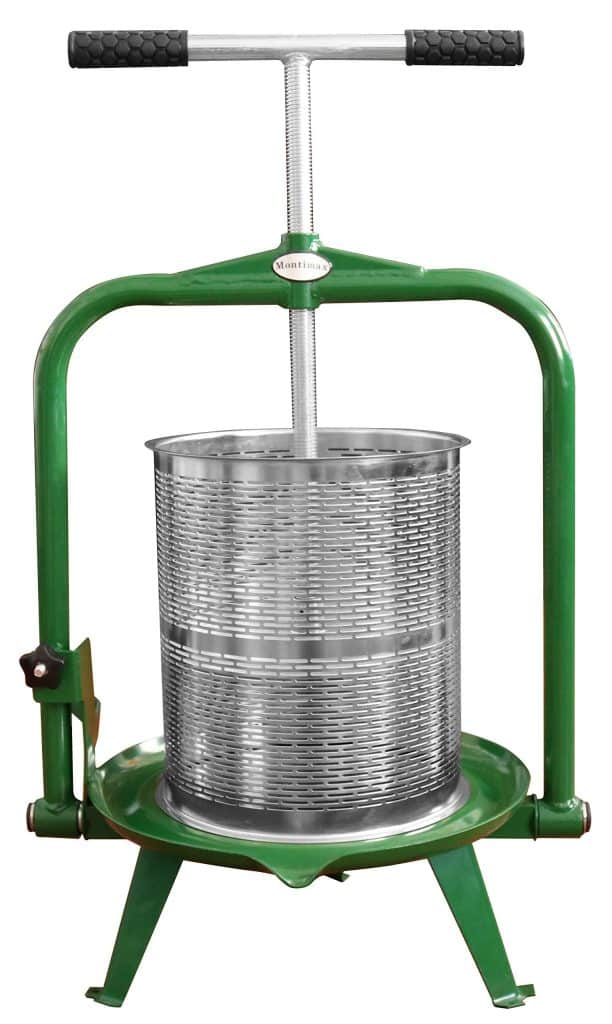
The wine and cider press played a crucial role in producing these popular alcoholic beverages. The press extracted the liquid by applying pressure to crushed grapes or apples, separating the must (juice) from the pomace (skins and seeds).
This process was essential in the winemaking and cider-making industries, contributing to the quality and consistency of the final products.
| Detail | Information |
|---|---|
| Invention Year | 20th century |
| Price Range | $20 – $100 |
44. Wood Bending Machine
Wood bending machines were instrumental in the production of curved and sculpted furniture pieces, showcasing furniture makers’ remarkable craftsmanship and skill.
These specialized machines allowed woodworkers to manipulate and shape wood into intricate, organic forms, creating iconic furniture designs that have stood the test of time.
| Detail | Information |
|---|---|
| Invention Year | 20th century |
| Price Range | $500 – $5000 |
45. Wood Disintegrating Machine
Wood disintegrating machines, also known as wood pulpers or refiners, played a crucial role in processing wood materials, particularly in the paper and pulp industry.
These machines broke down wood fibers into smaller components, preparing the raw material for further refinement and eventual transformation into various paper products.
| Detail | Information |
|---|---|
| Invention Year | 19th century |
| Price Range | $500 – $5000 |
Conclusion
From the practical innovations that revolutionized transportation and industry to the new concepts that make you scratch your head in wonder.
These patents showcase the boundless creativity and ingenuity of human minds throughout history.
While many W-themed inventions may seem like mere curiosities today, they all shaped our world, often laying the foundations for technologies and practices we take for granted.
So the next time you encounter something unusual, remember that it could be the start of the next great breakthrough – or, at the very least, a source of endless fascination.
Now, go forth and explore more of these wonderfully weird innovations!

